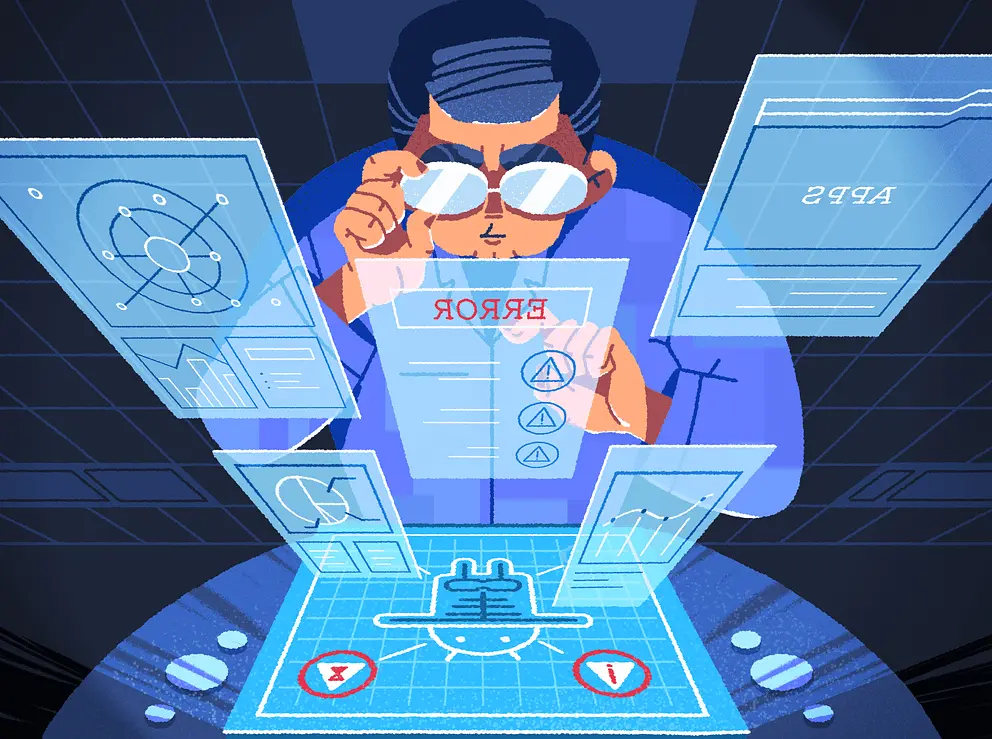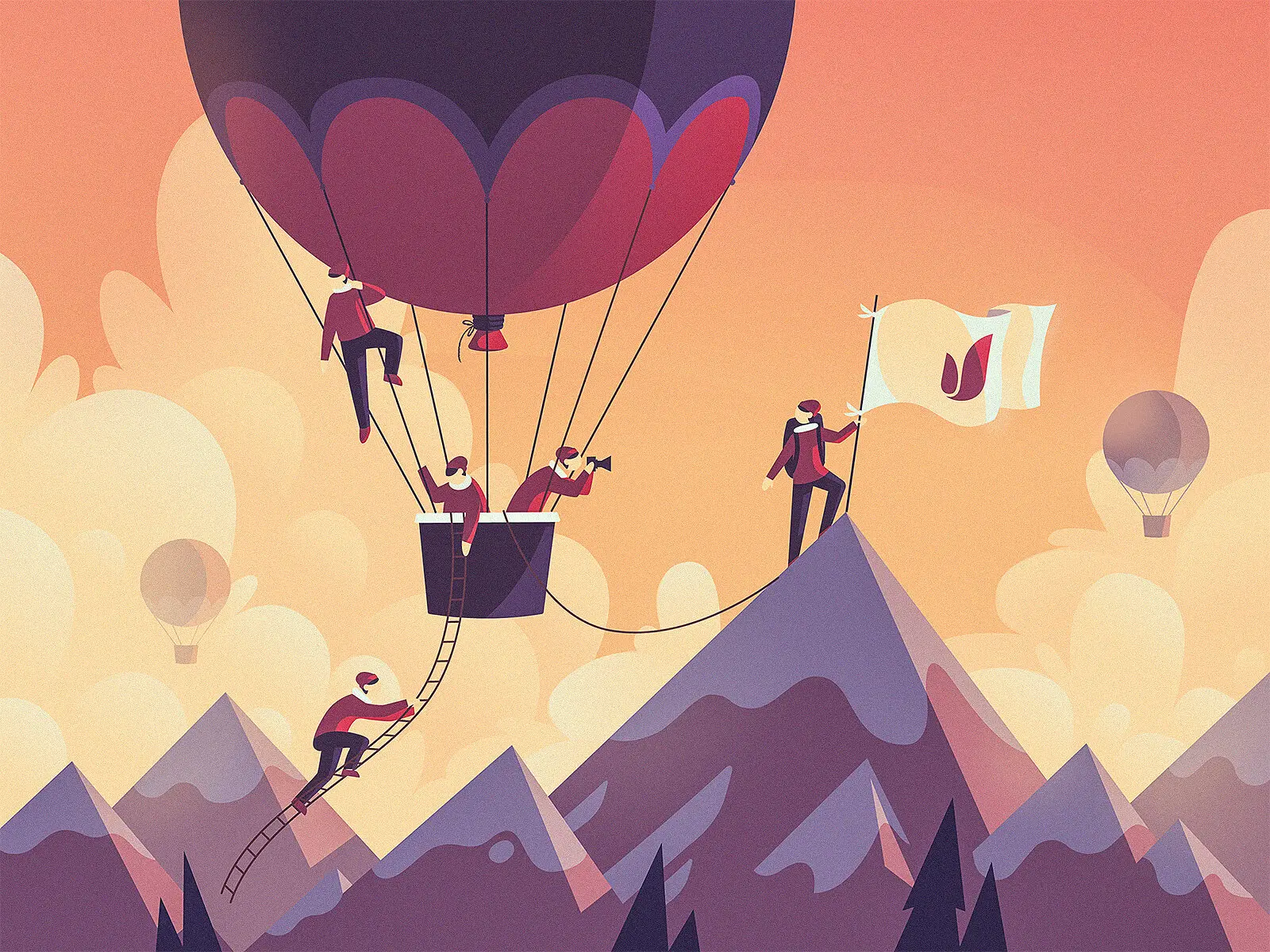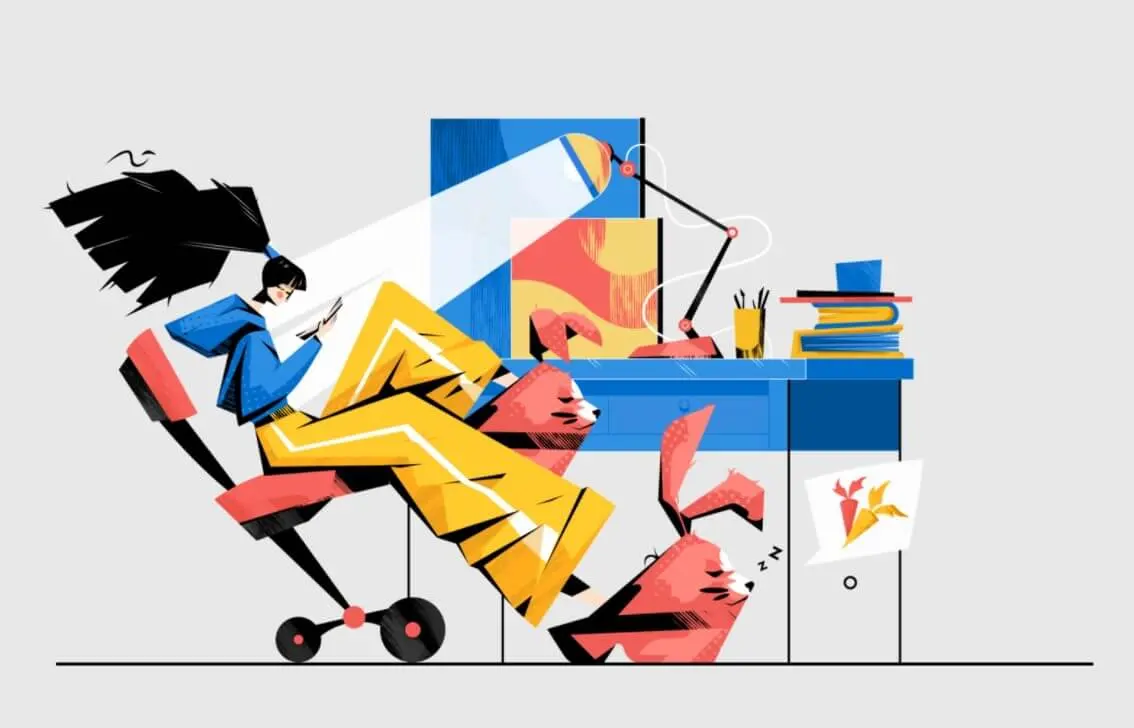How Can AI Transform Graphic Design Industry
The use of AI in art and design has generated discussion and controversy in the art community. The graphic design sector is already experiencing a big impact from AI. Some creators and critics think that AI-generated art cannot be regarded as real art since it lacks conventional art’s human touch and emotional richness. They contend instead that AI-produced art is merely a by-product of machines and that the algorithms utilized to produce it lack the imagination and deliberateness of human artists. But there’s an opposite viewpoint. Let’s consider a few examples of what’s AI Art, how AI is affecting graphic design industry and will AI replace graphic designers. Also, check on impact of graphic design trends and ai in graphic design usage for designers and beyond.

What is AI Art and Graphic Design?
Artificial intelligence is a field of study that aims to educate computers human cognitive skills so that they can think and behave like people. Machine learning makes this possible by exposing algorithms to vast amounts of data over time, which they then consume and process. The performance of the computer is enhanced since this data trains the algorithm to recognize similar data in the future. Using machine learning to find difference between a GIF and a video is a good way to use artificial intelligence in graphic design collaboration. The AI tools facilitate design work by automation, assisting or taking the place of designers, etc.
Thus, artificial intelligence (AI) approaches, such as machine learning algorithms, are used in AI art and graphic design to produce AI and graphic design or improve digital works of art and other designs. The main goal of AI art is to create original and imaginative photos, movies, or other types of digital media using AI algorithms.
No wonder, as artificial intelligence in graphic design is able to assess design trend data and forecast upcoming trends. This can assist designers in remaining innovative and producing more user-relevant and engaging designs.AI systems, for instance, may examine social media data to spot design trends and gauge consumer interest via ai graphic design.
Brands adopt AI labels, which are currently a significant social trend, in the aim of enhancing the customer experience through convenience, authenticity, accessibility, and trust. AI not only makes it possible to create more captivating, intriguing images, but it also makes self-translation possible. Because they can more effectively control the values and messages they represent through the virtual influencers they partner with, so they can maintain a good reputation.
5 Ways AI is already influencing the Graphic Design Industry
AI technologies use deep learning, computer vision, and neural networks to create images and artwork that mimic human creativity and uniqueness. AI art generators can be useful in a variety of industries, including graphic design, animation, video game development, and fine art. They provide a fresh method for designers and artists to exercise their imaginations and produce original digital artworks without the use of conventional art supplies. The following are some ways that artificial intelligence (AI) has the potential to change the art and design software sector just right now:
1. Fresh Creative Ideas
AI algorithms can now produce innovative and unexpected visuals and designs that might have been challenging or impossible to develop manually. This can open fresh creative avenues and allow designers and artists to experiment with new approaches.
2. Increased Effectiveness
Specific design tasks, including creating layouts, choosing color schemes, or suggesting typography, can be automated with AI. This can free up the designers’ time so they can concentrate on more challenging and creative areas of their work.
They can quickly transform low-quality, pixelated, blurry photographs into high-quality, tidy, and sharp ones. Additionally, they can quickly address color, contrast, and bad lighting issues for you.
3. Personalization
In order to transform existing and produce unique designs and works of art via generative ai design, AI systems can examine data on consumer preferences and behaviors. This may make it possible for designers to develop more unique and interesting client experiences and graphic design future.
Artificial intelligence (AI) picture improvement techniques sharpen and restore objects, and replace blurry or pixelated portions with better-quality ones to do this. As a result, information is maintained throughout the transformation.
4. Availability
Thanks to a variety of AI-based image improvement technologies, recovering photos and enhancing resolution can be much simplified.
AI-driven solutions can assist in opening up art and design to a larger audience. For those who are blind, for instance, AI algorithms can analyze photographs and generate descriptions. AI can be employed to build structures that are more inclusive and accessible to those with disabilities.
5. Newer business models
In the art and design sector, AI can enable new business models like selling artwork produced by the technology or granting licenses for AI-powered design tools. This can open up fresh revenue streams and make it easier for designers and artists to find new methods to monetize their output.
5 Different Ways AI Can Help Graphic Designers
The graphic design sector will be significantly impacted by AI, which will automate tedious activities and produce individualized designs via ai for designers. Efficiency and production will rise, but concerns about creativity and job displacement will also surface. These changes must be accommodated for the sector to remain relevant and competitive. Here are at least 5 ways it’s already assisting designers.
AI-powered design tools
AI algorithms are used by apps like Adobe, Canva, Designhill, and Crello to recommend design layouts, color schemes, and even stock photos to designers. As a result, designers have more time to work on complicated and imaginative projects. AI can also aid designers in developing their originality.
Additionally, AI art generators like Deep Dream Generator, NeuralStyler and similar can produce art that is tailored to the user’s preferences. Users can input their preferred patterns, colors, and styles, for instance, and the artificial intelligence graphics program will produce artworks that reflect their tastes. Visual art and design are produced using AI, and it may also be applied to other genres like music and video.
Streamlining repetitive tasks
AI can facilitate the creation of desired graphics by non-designers. Image generation will become quicker. Additionally, UI/UX will be considerably faster and smoother than it now is. Users can also anticipate that AI will do a lot of the more mundane tasks, freeing up their time for enjoyable and creative activities and reducing the amount of time needed to render their ideas. Everyone will be capable of becoming an artist.
Automating image editing
These algorithms can discover patterns and styles that can be utilized to create new works of art by being trained on massive datasets of previous works of art. AI Art is a type of computer-generated art in which the computer actively participates in the creative process via editing or even designing particular graphics.
Working with typography
In graphic design, AI can automate some processes like layout generation, color palette selection, and typography suggestions. This can help designers explore new ideas more rapidly and save time. AI can also improve current designs by deleting extraneous elements or softening jagged edges. Background removal will no longer be a pain in the rear, or enhancing images with filters etc.
Augmented and Virtual Reality
AI Art and graphic design represents a new frontier in digital creativity, where human artists and designers may work alongside robots to push the envelope of what is possible. Image enhancement is about to get even more impressive via AR and VR, opening even newer creative possibilities.
Can AI replace Artists and Designers?
Actually, AI can only partially replace workflow creatives in certain fields. While AI algorithms can produce innovative and unique designs and works of art, they lack the human creativity, intuition, and emotions crucial to the creation of art and design.
Additionally, the creation process is equally as important to art and design as the finished output. Ideation, experimentation, and iteration are therefore crucial steps in the art and design process and call for human creativity and intuition.
While AI can be a potent tool for designers and artists, it cannot replace the distinctive human qualities crucial to the creative process.
Art and design aim to express the artist’s or designer’s emotions, thoughts, and concepts through visually pleasant visuals. Human ingenuity, imagination, and nuance are superior to that of machines in the work of artists and designers.
The data that AI algorithms are educated on also has limitations and deprived the above-mentioned attributes. Large collections of current artworks can teach them patterns and styles, but with human input and direction, they are able to entirely come up with fresh ideas or styles.
The debate about AI art extends beyond the realm of the arts. Some people worry that the use of AI in art and design may result in the loss of jobs for human creators. They fear that ultimately AI will completely replace human innovation, eliminating jobs for designers and artists.
Some designers and artists are using ai in design aesthetics to improve user experience, their work rather than to replace it in response to these worries of ai for graphics. They blend AI-generated optimization features into their designs and use AI algorithms to develop fresh concepts and sources of inspiration. But the application of AI in art and design are complicated trends that are still developing.
Conclusion
Although AI art and graphic design are still in their infancy, we anticipate further development in this area over the next few years. Artificial intelligence graphic is a trend for sure. AI holds a promising and exciting future for conventional art and design. While there are legitimate worries about how artificial intelligence (AI) may affect human creativity and how AI-generated art will fit into the art world, there are also exciting potential for new kinds of artistic expression and machine-human collaboration; there are a few future effects of artificial intelligence on conventional art and ai for graphic design.
By allowing designers to create digital art via ai and design ways, sell AI-generated designs, or license AI-powered design tools, AI algorithms can open up new business sources for them. Designers may utilize AI algorithms to produce unique explainer video designs for clients, enhancing their design skills via ai graphics design and boosting revenue.


